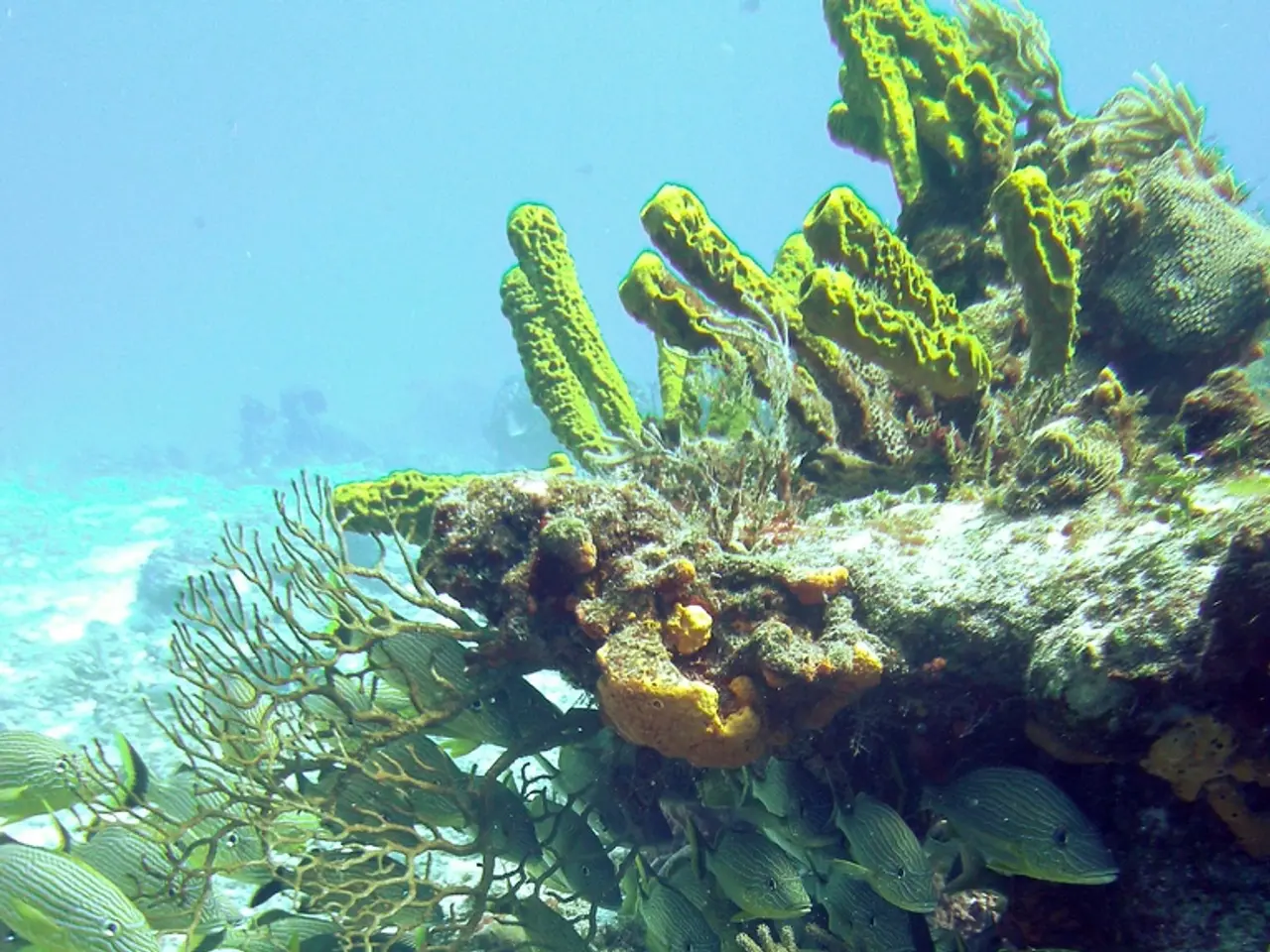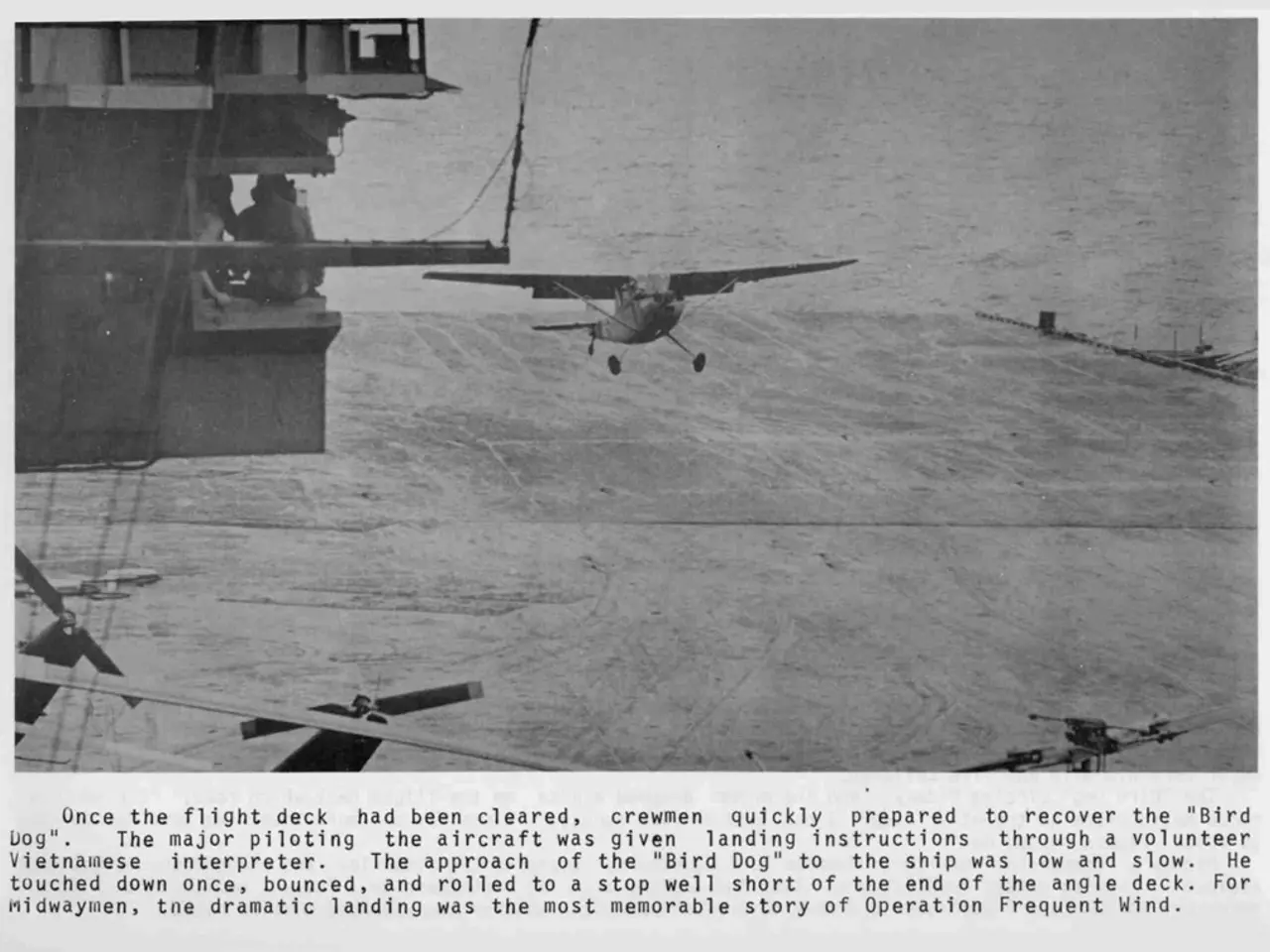"Exploring Submerged Treasures: Revelations on Underwater Gold Reserves"
In the Pacific Ocean, particularly around island chains like Fiji and Papua New Guinea, promising sites rich in polymetallic sulfides have been identified, offering an abundant new source of gold. However, the environmental implications of seabed mining for gold and other minerals in oceanic regions are significant and a subject of ongoing scientific and policy debate.
The main concerns revolve around the destruction of seabed habitats, the creation of sediment plumes, and the release of potentially toxic substances into the marine environment. Mining operations physically remove seabed nodules or mineral deposits, which serve as habitats for sponges, corals, and other marine organisms, leading to the destruction of little-explored ecosystems that harbor unique biodiversity.
The disturbance of the seabed generates sediment plumes that can spread and smother marine life, potentially transporting heavy metals and toxins through the water column. Since marine ecosystems, especially deep-sea ecosystems, regenerate very slowly, the effects of mining can be long-lasting or even irreversible, impacting marine life and fisheries crucial to local communities.
Unlike terrestrial mining, deep-sea mining damage is less visible, leading to concerns that it may proceed without adequate public scrutiny or understanding of full environmental costs.
Efforts to reduce environmental harm include leaving behind part of the nodules to facilitate recolonization by marine organisms, managing sediment plumes to limit their dispersal, and developing robust regulations to govern seabed mining. There is a push for comprehensive environmental monitoring to ensure that operations are conducted responsibly and that ecosystems are protected.
However, controversy and calls for caution persist. Many countries and hundreds of scientists advocate for a moratorium on seabed mining until the environmental impacts are better understood, pointing to the risks of irreversible ecosystem damage. Some manufacturers, including major corporations like Volvo, BMW, and Google, have pledged to avoid using minerals sourced from seabed mining due to environmental concerns.
The demand for certain metals like cobalt and nickel, commonly sought in seabed mining, is fluctuating as battery technologies evolve and terrestrial supplies remain ample, which may reduce the economic pressure to mine the ocean floor.
The sheer volume of seawater available globally presents a virtually limitless supply, potentially easing pressure on traditional mining sites and reducing costs associated with land-based mining operations. The Mid-Atlantic Ridge, a vast underwater mountain range, is a notable area with hydrothermal vents that spew mineral-rich fluids, creating ideal conditions for mineral formation.
Seabed mapping is a primary technique used in the exploration, which involves the use of sophisticated sonar systems to create detailed maps of the ocean floor. Exploration of underwater gold deposits is being driven by advanced exploration techniques and technologies, such as autonomous underwater vehicles (AUVs) equipped with high-resolution cameras and sensors, enabling researchers to explore remote underwater locations without human intervention.
The discovery of substantial underwater gold reserves off the coastlines of Japan and South Korea has sparked interest from both national governments and private enterprises. However, many prospective underwater gold locations remain inaccessible due to technological limitations or geopolitical constraints. International collaboration will be essential for exploring these territories while respecting territorial boundaries and ecological considerations.
Balancing economic benefits with environmental responsibility is crucial to ensuring that this innovative approach to gold extraction does not come at the cost of our planet's well-being. The future of seabed mining depends on developing technologies that minimize environmental harm, establishing strong regulatory frameworks, and carefully weighing economic benefits against potentially irreversible ecological costs.
References: [1] Greenpeace International. (2021). Deep Sea Mining. Retrieved from https://www.greenpeace.org/international/act/deep-sea-mining/ [2] International Union for Conservation of Nature. (2021). Deep-sea mining. Retrieved from https://www.iucn.org/resources/issues/deep-sea-mining [4] International Seabed Authority. (2021). Mining Code. Retrieved from https://www.isa.org.jm/mining-code-1994/
- The ongoing scientific and policy debate surrounding seabed mining emphasizes the potential destruction of seabed habitats and unique biodiversity due to the physical removal of nodules or mineral deposits.
- Mining operations could create sediment plumes that smother marine life, potentially transporting heavy metals and toxins through the water column, impacting marine ecosystems regeneration and fisheries crucial to local communities.
- Driven by advanced exploration techniques and technologies like autonomous underwater vehicles (AUVs), the exploration of underwater gold deposits, such as off the coastlines of Japan and South Korea, has sparked interest, but many prospective locations remain inaccessible due to technological limitations or geopolitical constraints.
- Environmental monitoring and robust regulations are essential for ensuring responsible seabed mining operations and protecting ecosystems from potential irreversible damage.
- Manufacturers, like Volvo, BMW, and Google, are advocating for a moratorium on seabed mining due to environmental concerns, and the demand for certain metals like cobalt and nickel, commonly sought in seabed mining, is fluctuating as battery technologies evolve and terrestrial supplies remain ample.




